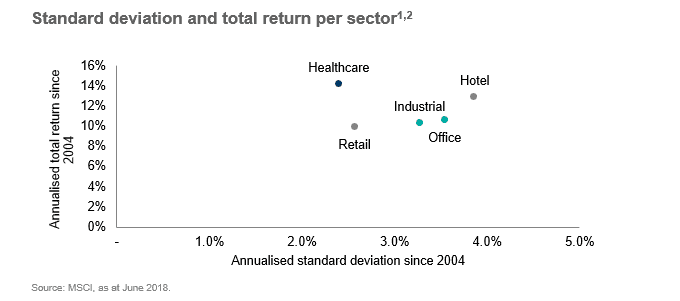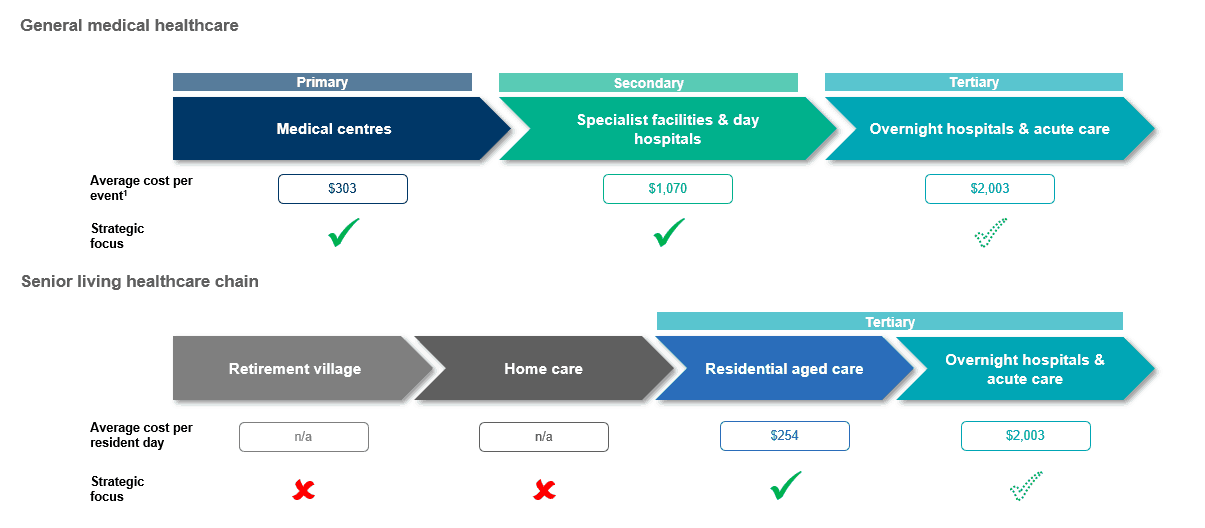You are now leaving Centuria Australia
and entering Centuria New Zealand.
The healthcare sector is underpinned by growing non-discretionary demand for healthcare services. The key healthcare demand drivers in Australia* can be summarised as:
*Sources: Australian Bureau of Statistics, Australian Institute of Health and Welfare, Health Expenditure Australia 2017-18.
The healthcare property sector has delivered strong returns and experienced relatively low volatility when compared to traditional real estate asset classes.
Characteristics of the healthcare property sector which have driven these trends:


As a result of Centuria Healthcare understanding the key “forces at work” (anaemic wage growth, increased competition, changes in technology, and surgical behaviours) have led to the emergence of new models of care.
These changes had enabled change in the healthcare property sector which has led to two key changes:
Increased securitisation
Historically, large healthcare real estate property portfolios have been held on balance sheet by major for profit and not-for-profit healthcare operators. It is estimated that $5.2 billion1 of healthcare property is securitised (total Australian securitised property market is $124 billion2).
In terms of the aged care property market, the total Australian securitisable value is $13.8 billion and is forecast to grow to $19.9 billion by 20273. Additionally, opportunities in the aged care property sector are anticipated to increase as a result of the Royal Commission into Aged Care Quality and Safety.
Ongoing sector consolidation
Whilst the healthcare property sector is highly fragmented, a significant consolidation opportunity exists for early movers, where there is mutual benefit in specialised healthcare property fund managers and healthcare operators can achieve scale efficiencies, whilst also enhancing diversification benefits via targeted operator acquisitions.
Centuria Healthcare is optimistic around three key areas:
We know that track record and relationships are highly valued by operators. Centuria Healthcare’s track record and understanding of the sector allows it to become the preferred property partner for operators.
Centuria Healthcare has a differentiated healthcare property portfolio focused on cost effective models of care. This is driven out of Centuria Healthcare’s understanding of the market and identification of opportunities in the healthcare landscape.

Please complete the form to register your interest in receiving updates on future unlisted property fund opportunities.